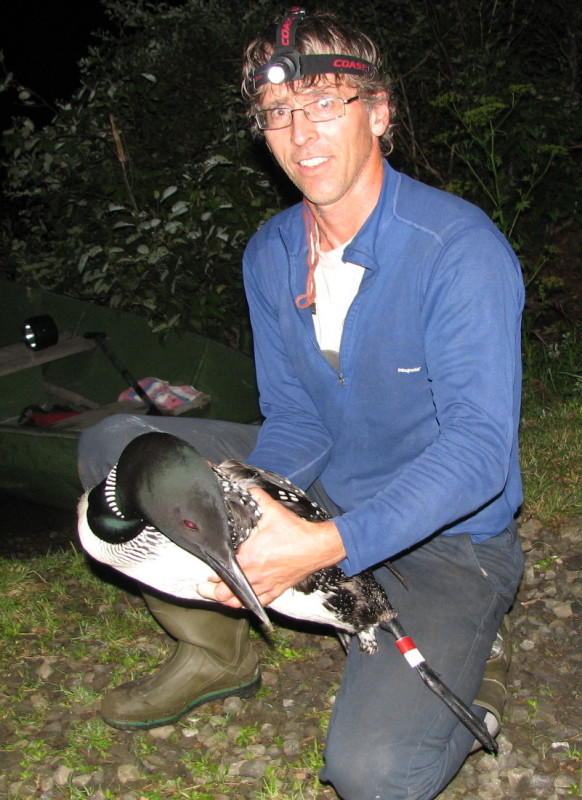
VCE Loon Biologist Eric Hanson is ready to release a loon after it was disentangled from fishing line. / © Melissa Perley
Ten years after they were removed from Vermont’s endangered species list, two of Vermont’s most cherished bird species continued to expand their populations in 2015. Loons and peregrine falcons both nested in record numbers this summer.
On the shores of Vermont’s lakes and ponds, 87 nesting loon pairs hatched a total of 69 chicks that survived the 2015 season.
Loons faced dramatic declines in the 20th century due in large part to shoreline development and human disturbance of their habitat. However, following decades of collaborative recovery efforts by biologists from Vermont Fish & Wildlife and the Vermont Center for Ecostudies, as well as by many citizen volunteers, loons were removed from Vermont’s endangered species list in 2005.
“The return of loons to Vermont represents a true conservation success story,” said John Buck, nongame bird project leader for the Vermont Fish & Wildlife Department, “and it would not have been possible without our partners and volunteers. Going forward, all of us will be responsible for ensuring loons remain lasting residents of our lakes and ponds by protecting important shoreline nesting areas and keeping a respectful distance.”
Vermont also saw strong nesting success in peregrine falcons this year with 44 cliff-nesting pairs producing a record 67 chicks. “The peregrine’s recovery is directly tied to our ongoing partnership with Audubon Vermont and the many, many citizen volunteers who monitor falcon nests during the nesting season,” noted Buck. “Continued monitoring and habitat conservation, such as temporary cliff closure to hikers and climbers during the critical nesting season, will help ensure the falcon’s continued success.”
Bald eagles continue to hold steady in Vermont, but have not yet recovered enough to be removed from Vermont’s endangered species list. They produced 16 fledglings this summer, lower than the recent record of 26 fledglings in 2013. “The 2015 winter was especially severe in March and early April when most eagles are incubating their eggs, which likely had a negative impact on nesting success,” said Buck.
“While we can’t influence the weather, we can assist bald eagle recovery by identifying and protecting the critical habitat that is essential to their survival,” said Buck. “Bald eagles usually nest and feed near open bodies of water. Conserving these sites, especially nests, will help to ensure the eagle population makes a successful comeback to Vermont.”
